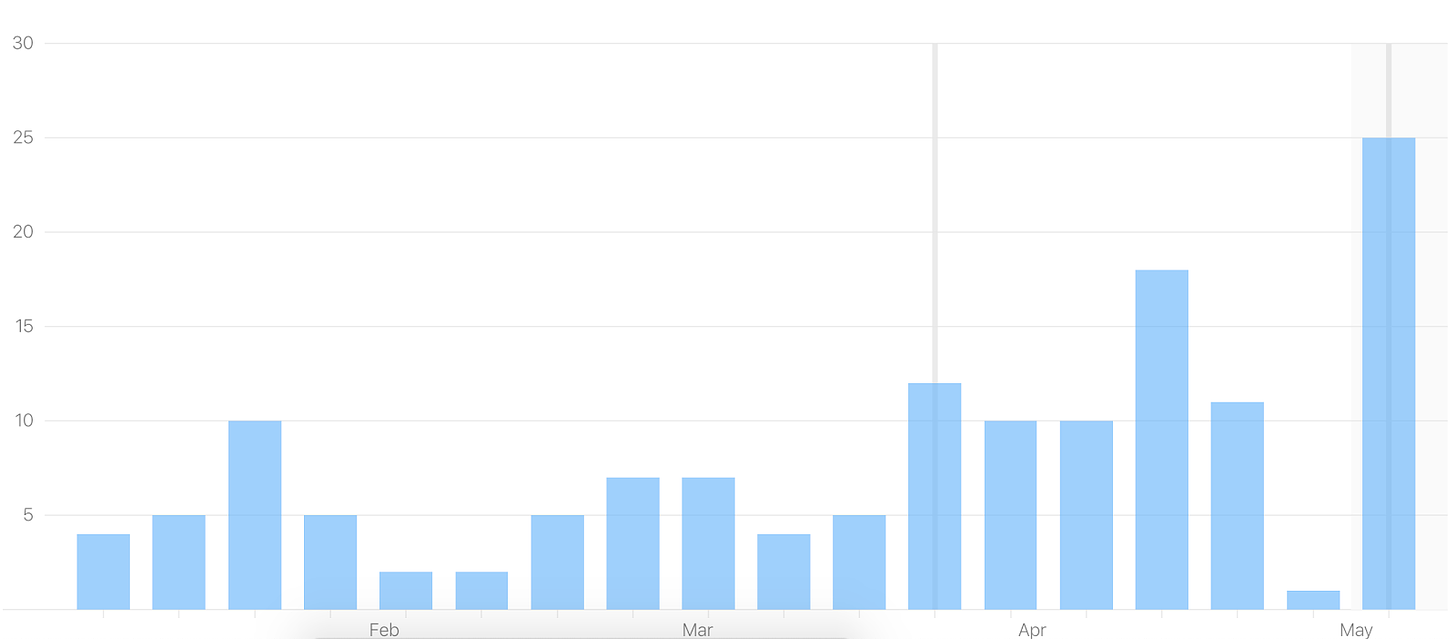Buying > Building (side hustle pt. 1)

March 2020 was a strange time in New York City. It was an even stranger time to quit your job. But that’s exactly what I did. After a year and some months at my previous job, I was ready for a change: a more consumer-focused, non-technical product role. But before diving into the job search, I wanted to take a couple of months off to work on some goals I’ve had for a long time. Quarantine worked in my favor because originally I was going to do this on top of travelling to New Zealand and Taiwan.
The goal is to work on ideas that make money immediately. Cash flow positive, unlike most startups. I don’t want to make a ton of money from these ideas. A few $100 a month, to start. Eventually, I’d want to turn these ideas to become truly passive income, with most of the day-to-day operations written down, codified and outsourced cheaply.
Having been a product manager for the last 1.5 years at a large-ish company helped quite a bit in structuring this time off, the sabbatical, if you will. Whilst previously I would have just waffled from idea to idea as the mood struck, I put in place enough of a structure to keep up the focus and motivation. I’ve been doing 2-week long sprints, with goals, daily updates (“standups”), and a retrospective at the end focusing on learnings and reflection on the goals.
What follows is a summary of Sprint 3.
Buying over Building
A fascination of mine has always been the buying of online businesses. Building a product from scratch is fun too (and I’ve done a lot of it). But there’s far less work involved in buying something that already has product-market fit. Product-market fit is oh so hard to find. Out of all the building I’ve done in my life, I’ve only found true product-market fit a handful of times.
I enrolled in the Micro Acquisitions course by Ryan Kulp at the start of my sabbatical and learnt a whole bunch about sourcing and picking online businesses. As suggested, I wrote down my criteria for businesses:
Cash-flow positive (income >> expenses)
Income from paying customers (no advertising, affiliate revenue, etc.)
1 year+ income history, growing or stable
1k-2k annual revenue
I looked around quite a bit and discovered very quickly that it’s just really hard to buy such great assets. The only reason for the owner to sell is when even the passive maintenance of such a business is taking up too much focus/headspace from the owner’s other interests. Very rarely do these businesses take up too much time. Very rarely do people sell because they need money. If the best price you’re going to get is 50x the monthly revenue, you’re only going to make 4k-8k. Not a life-changing amount of money.
Despite this, there are a few good deals out there. Through the discovery process, I found myself leaning quite a bit towards paid iPhone apps, which tend to have some nice features:
The business model is very simple
The numbers are trustworthy (from Apple’s App Store Connect)
I like a Swift codebase, and I can build small features myself
Across Flippa (shit quality), MicroAcquire (legit but lots of larger deals), Sideprojectors, and Indiemaker, I only found 2 deals – 2 paid iPhone apps – that I gave serious consideration to. More on that in a future post.
From-scratch side project
Sourcing and prospecting are not the most enjoyable things, to me. While I know that buying is a long process, and we have to rummage through a lot of garbage to find a gem, I’m not used to doing this type of work where the reward isn’t immediate. I feel unproductive if this is all I’m doing. Programming/building, on the other hand, is maximal instant gratification.
While I prospect, I needed additional projects where the goal is to just build.
Way back in 2016, I built a very simple app to help you make pizza doughs. All it lets you do is pick the number of pizzas you intend to make, and it generates a recipe with customized portions.
The app is so old that it was still on Swift 2. And I couldn’t even upgrade it automatically since all the tooling had been end-of-life’ed. For instance, I’d have to use XCode “Version 1” to go from Swift 4 to Swift 5 (the current version), but to get to Swift 4, I’d need another XCode “Version 2” that did the Swift 3 to Swift 4 conversion, and a different one, “Version 3”, to do the 2 to 3 conversion, but “Version 3” was no longer supported on my current OS version. 🤦🏾♂️So, I did it by hand. It’s a small app. No big deal.
The app had been getting ~50 downloads/month but I’d never really set up keywords or optimized the description/title to get more installs (primary sources of iPhone app downloads are either App Store search or App Store browse when people are browsing through lists and categories).
I checked out a couple of App Store Optimization (ASO) tools, AppTweak and AppRadar. Went with AppRadar and ended up doing just real basic stuff, like adding more relevant keywords upto the max allowed, and tweaking the name of the app.
It helped quite a bit!
(note: the week before the spike, I made the app from free to paid ($0.99). There were only 2 downloads of the paid app hence the low bar.)
More TK.



